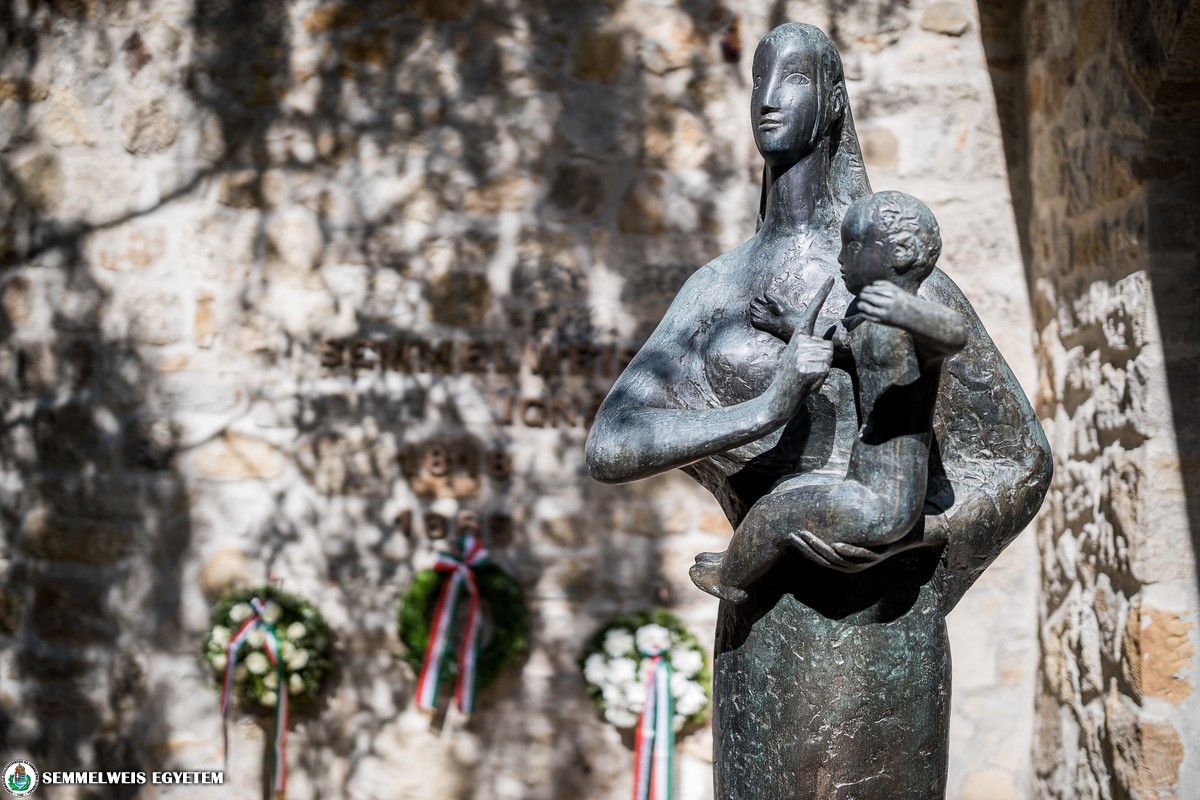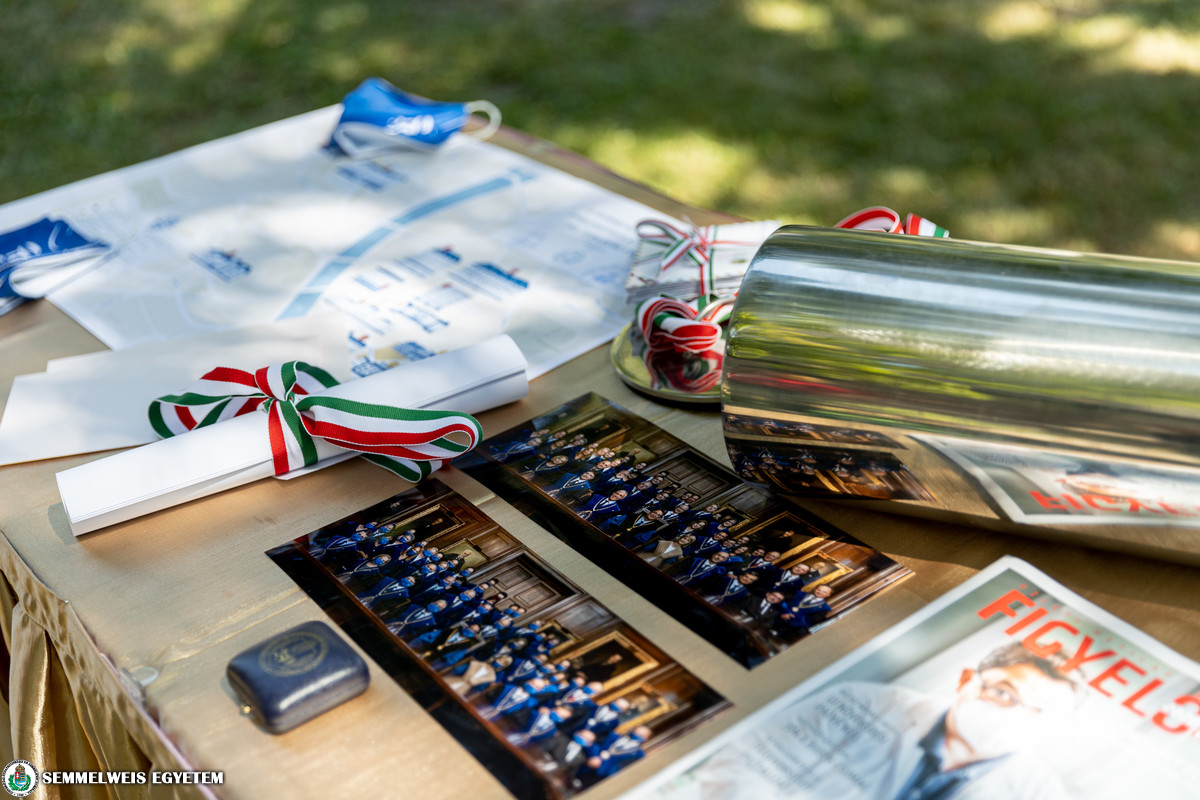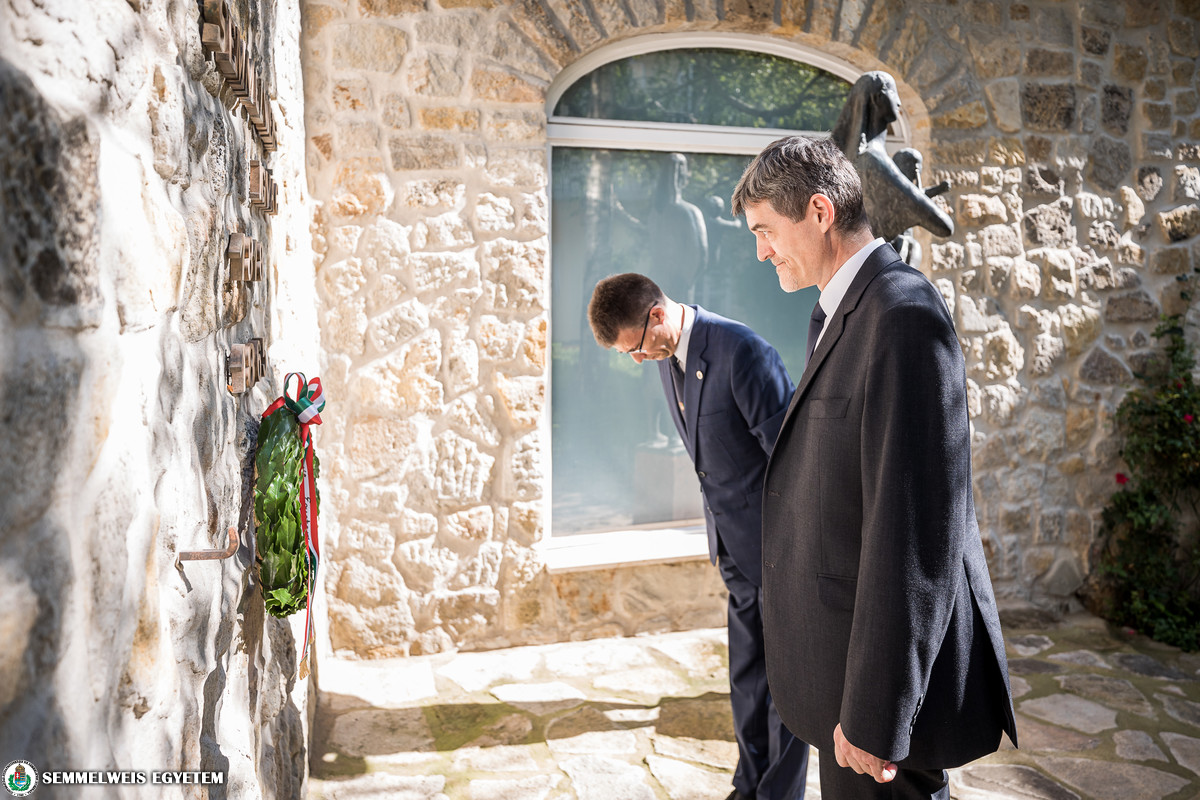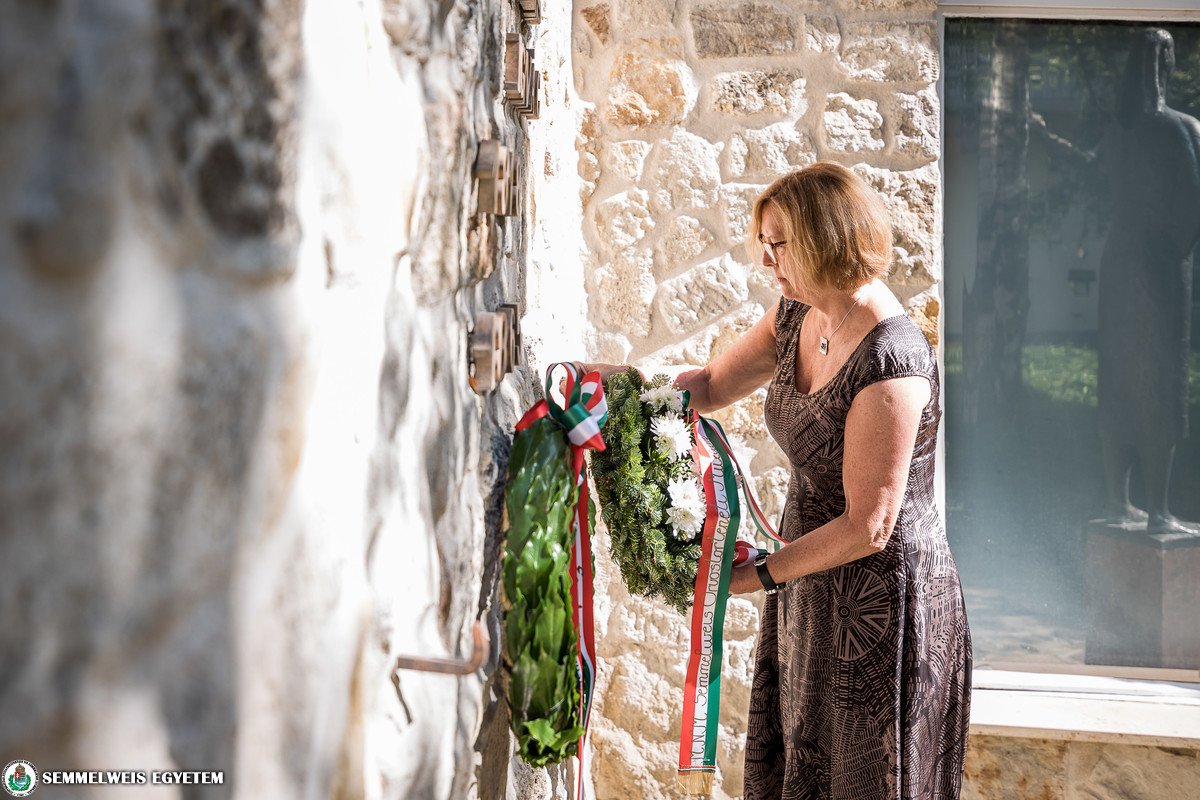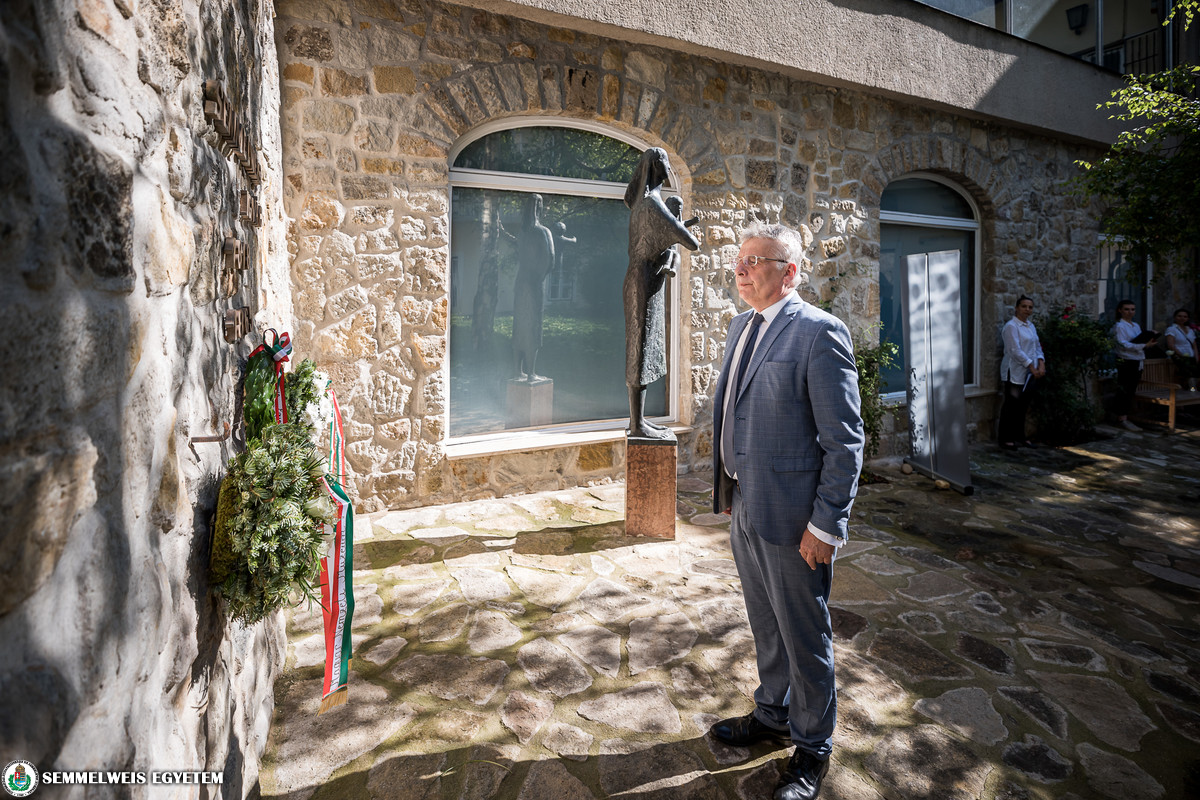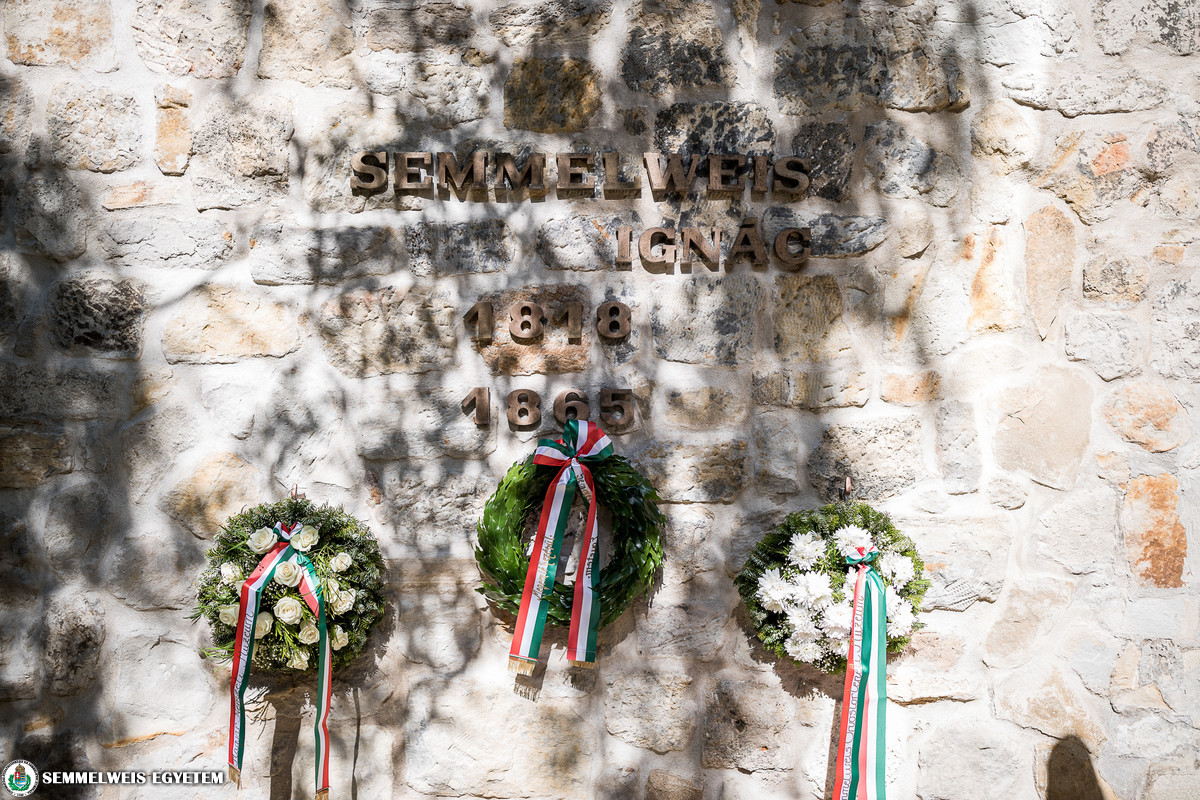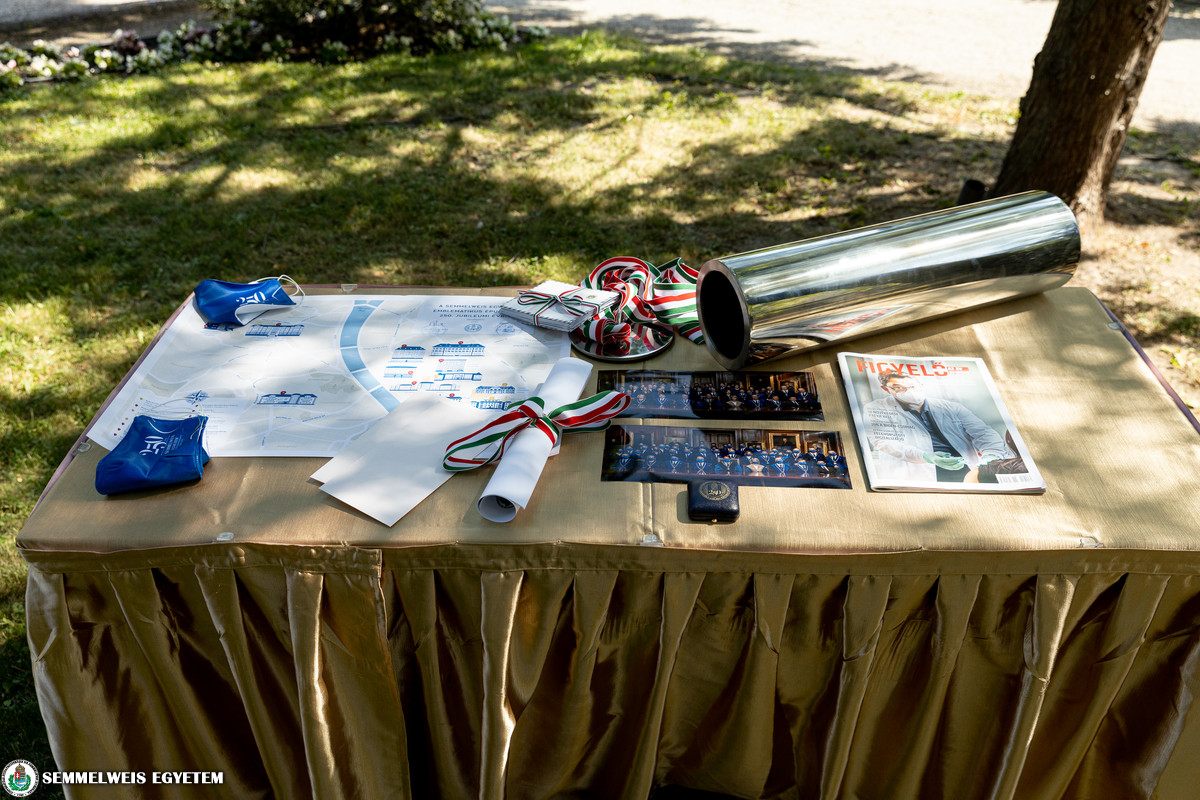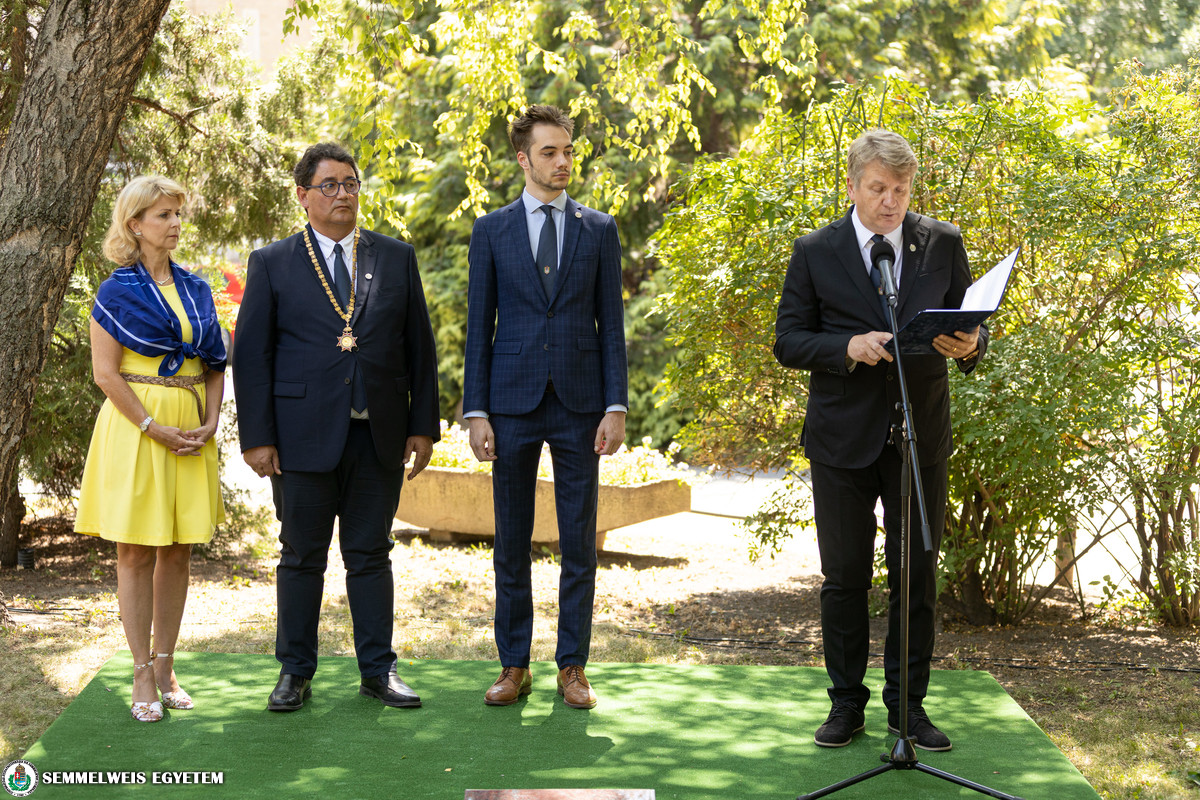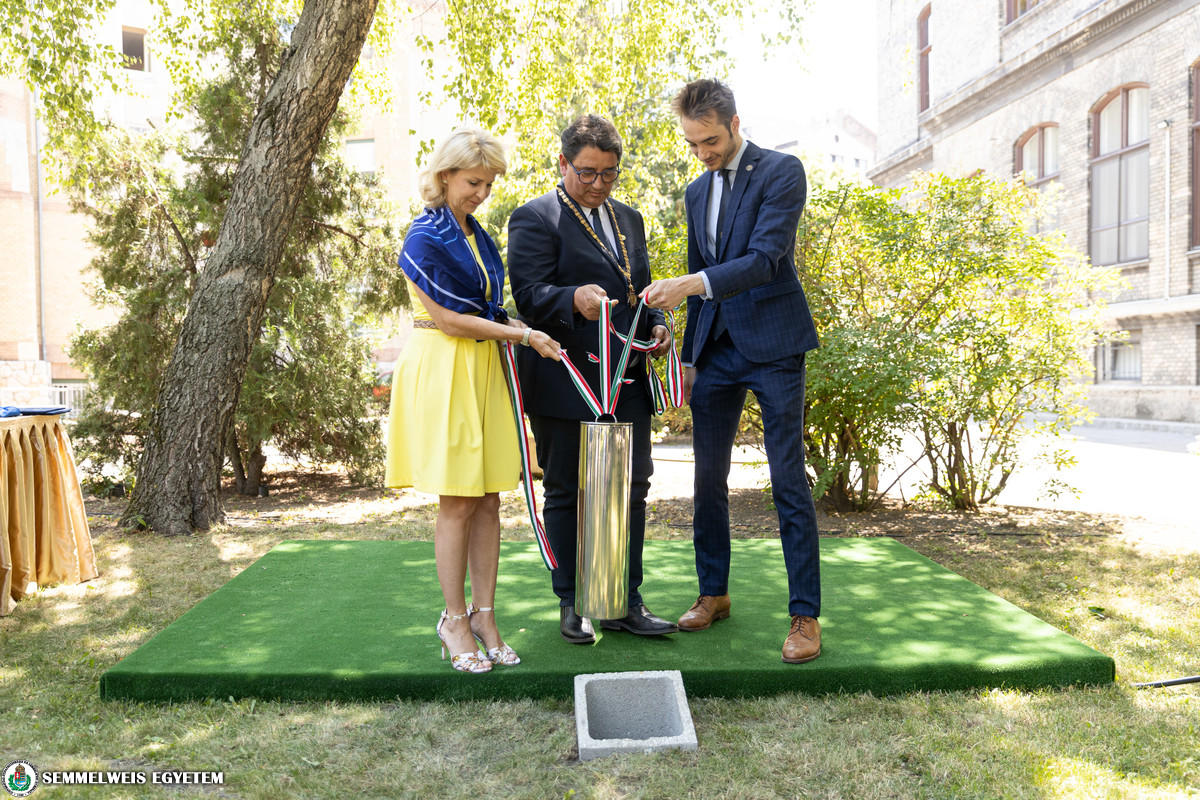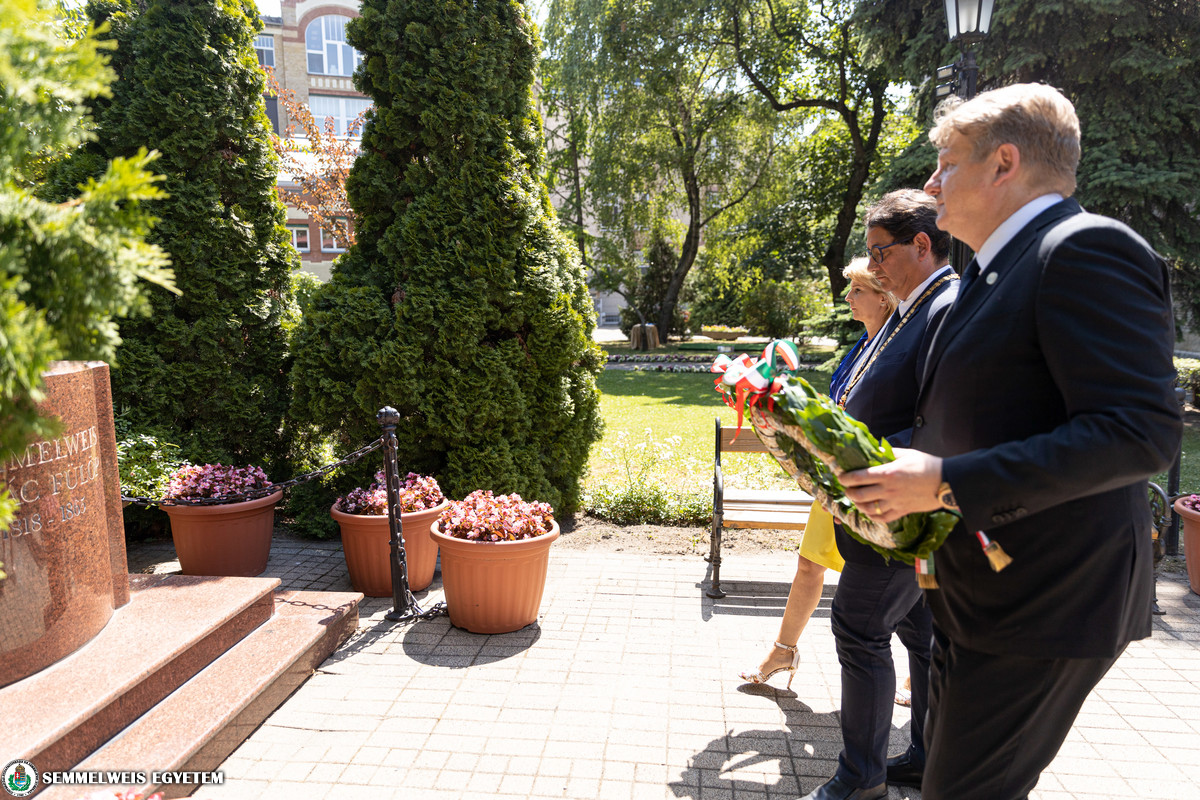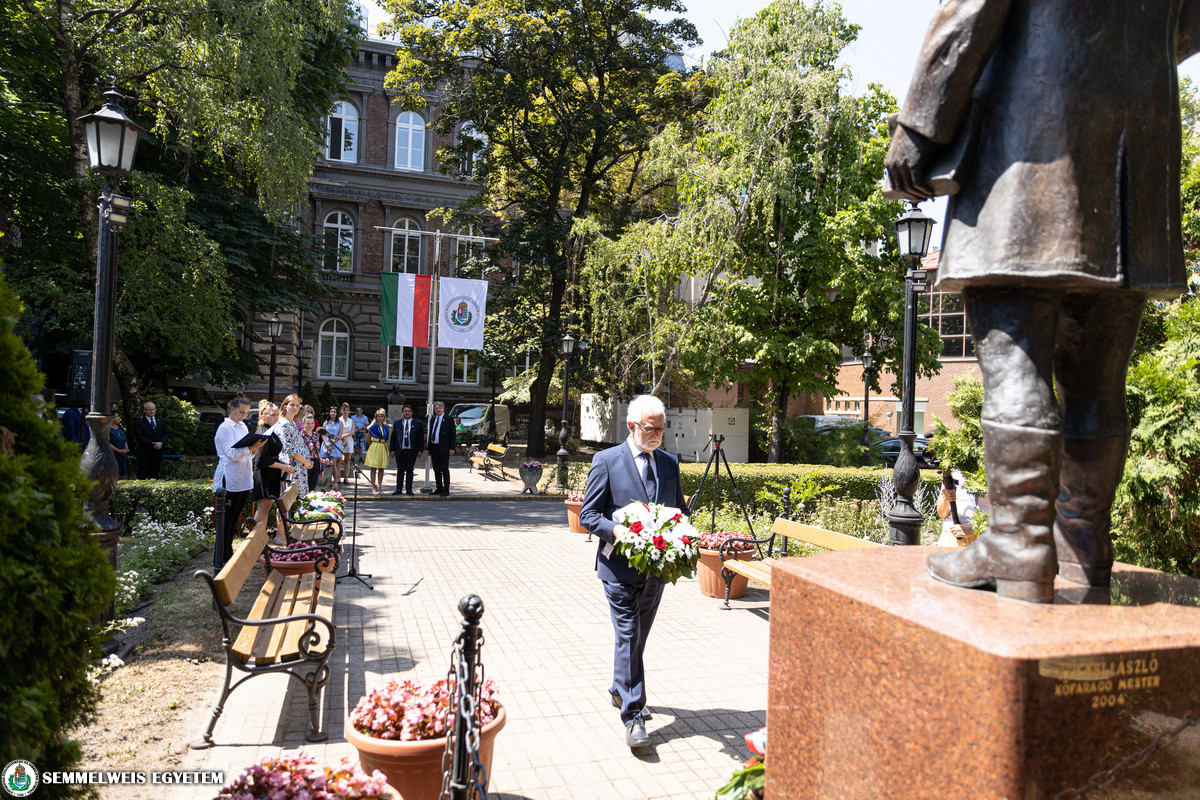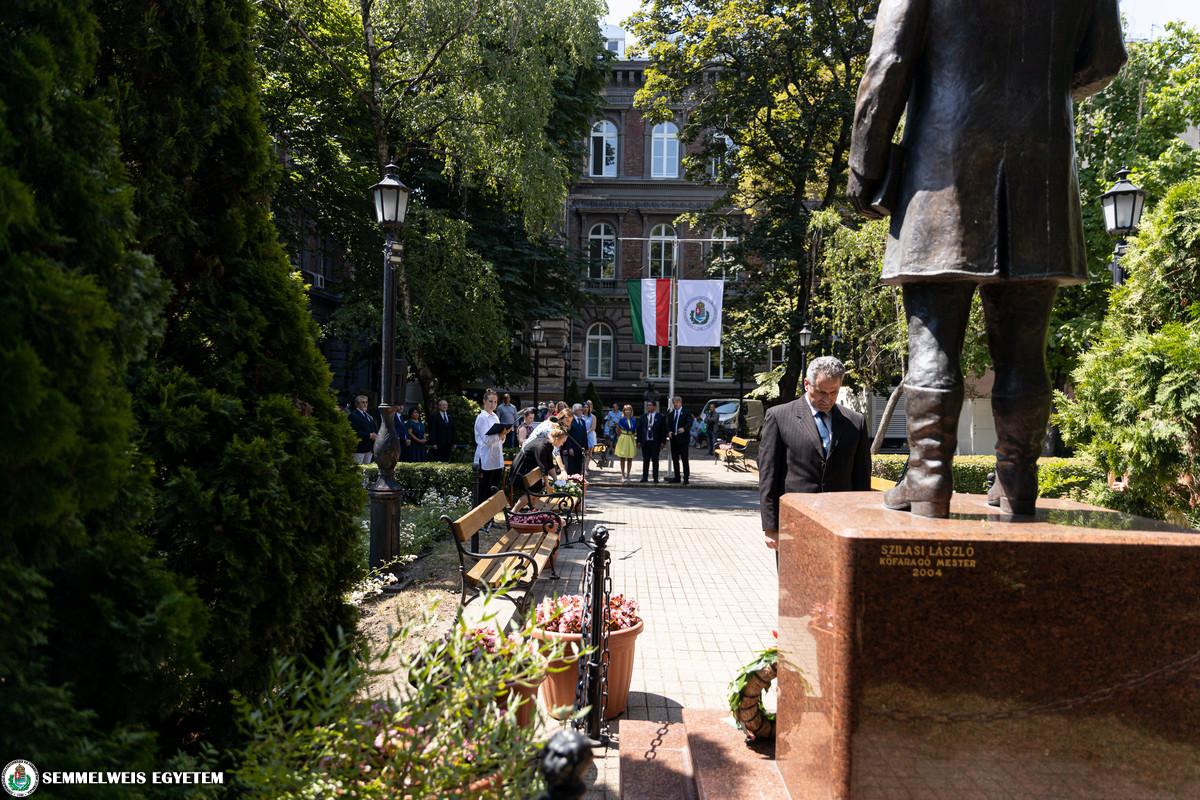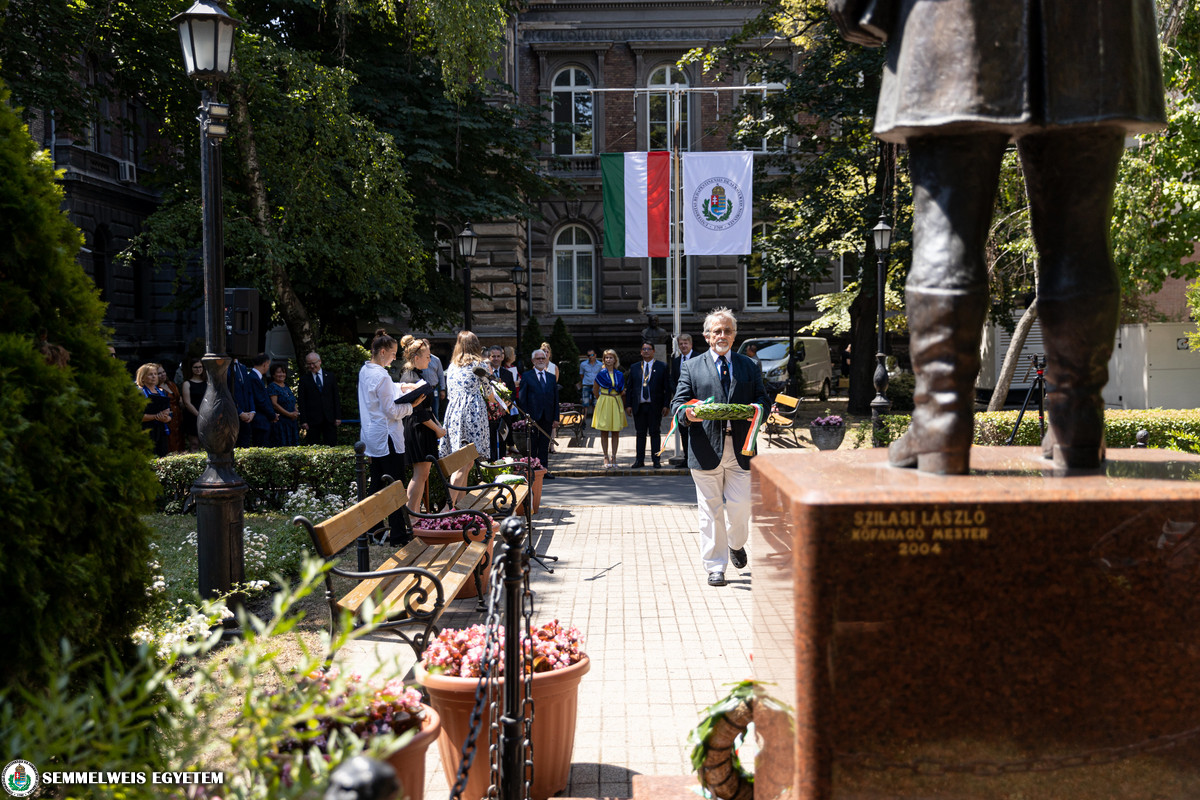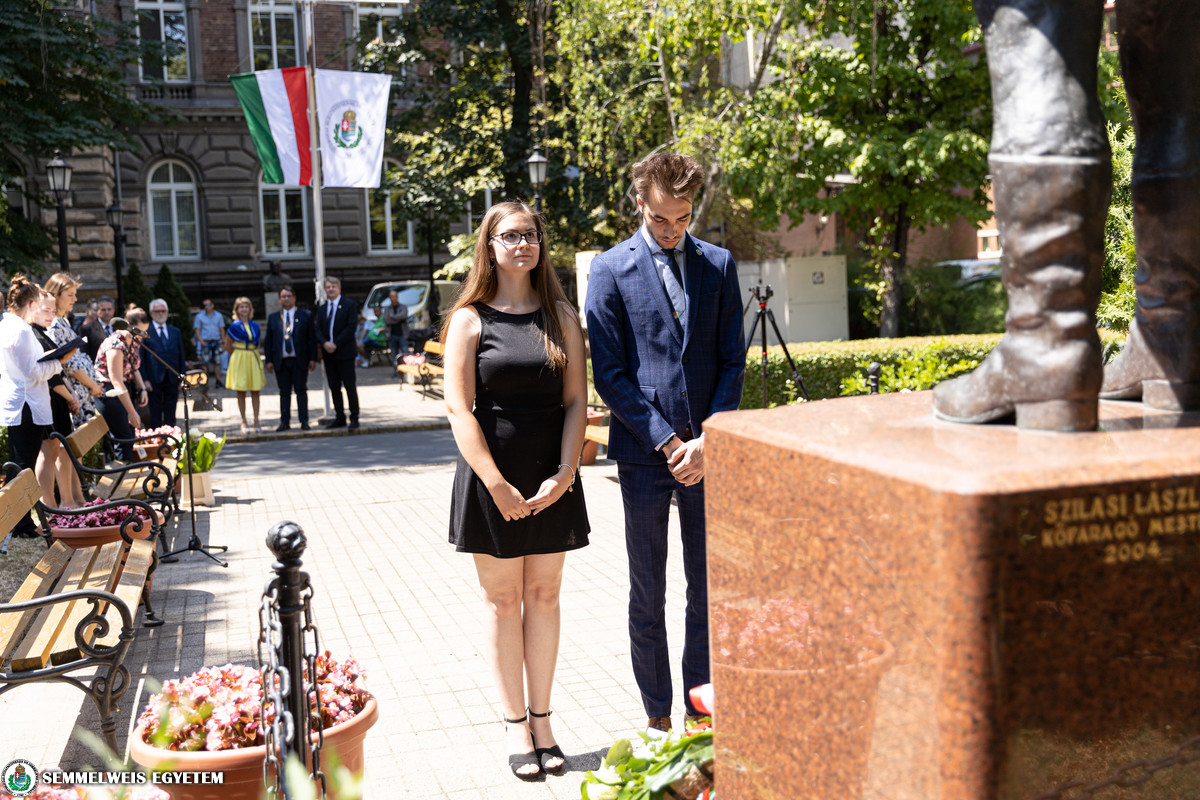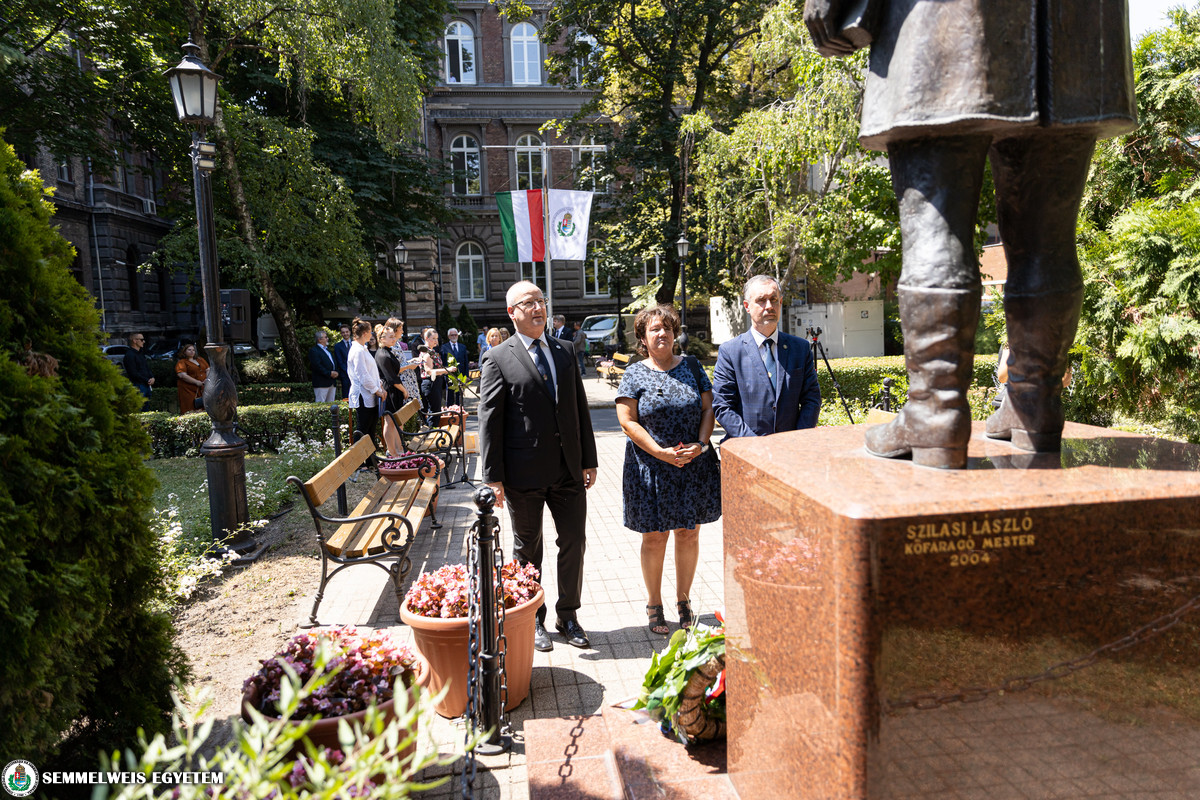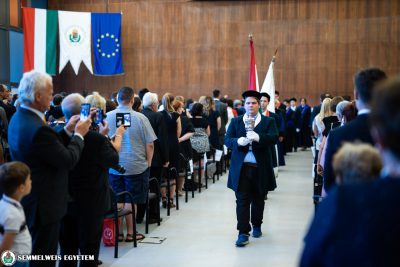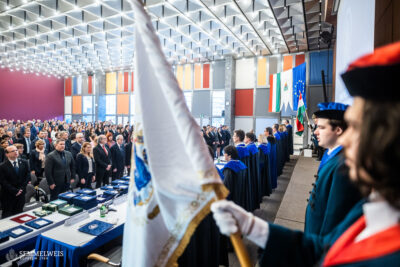Semmelweis Day commemorates the university’s namesake, Ignác Semmelweis, on the occasion of the 203rd anniversary of his birth. At the beginning of the all-day program series, a wreath was laid at the Semmelweis Medical History Museum, Library and Archives. Then the commemoration continued in the courtyard of the Inner Clinical Block, where a time capsule was placed as part of the ‘Letters to the Future’ initiative related to the 250th anniversary of Semmelweis University and a wreath was laid by the statue of Ignác Semmelweis.
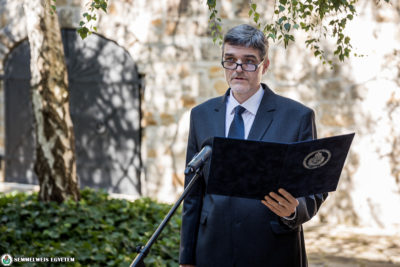 “Ignác Semmelweis, the best-known Hungarian physician, was born here on 1 July, 1818, and is respected worldwide as the savior of mothers. In recognition of his memory, a statue was erected in front of Heidelberg University Hospital, in the gardens of the Medical Universities in Vienna and Tehran, as well as in the Hall of the Immortals at the International Museum of Surgical Science in Chicago”, pointed out Dr. Miklós Csala, Professor, Head of the Department of Molecular Biology, Director of the Directorate of International Studies.
“Ignác Semmelweis, the best-known Hungarian physician, was born here on 1 July, 1818, and is respected worldwide as the savior of mothers. In recognition of his memory, a statue was erected in front of Heidelberg University Hospital, in the gardens of the Medical Universities in Vienna and Tehran, as well as in the Hall of the Immortals at the International Museum of Surgical Science in Chicago”, pointed out Dr. Miklós Csala, Professor, Head of the Department of Molecular Biology, Director of the Directorate of International Studies.
He added that Ignác Semmelweis managed to find out the reason for mortality caused by puerperal fever, and based on his discovery, he made it compulsory for his colleagues to disinfect their hands with chlorine at the time of entering the obstetrics department. With the introduction of this measure, maternal mortality was reduced to less than 1%. Ignác Semmelweis has indeed become the savior of mothers. According to Dr. Miklós Csala, Ignác Semmelweis was outstanding among his colleagues, as he not only had expertise in pathology and had remarkable chemical knowledge, but he was focusing on the noblest principles of the medical profession and not the protection of doctors’ authority, and with this, he ultimately did the most for the honor of the medical profession.
Our university proudly bears the name of Semmelweis, whose work may provide an example and inspiration for clinicians, researchers, and theorists. Noblesse oblige: one must be worthy of the name of Semmelweis. And we may achieve this if we carry out healing, research and educational activities in a way that even Ignác Semmelweis would be proud that our university bears his name”
– said the Director.
The series of ceremonies organized on the occasion of Ignác Semmelweis’ birth anniversary began in the inner courtyard of the Semmelweis Medical History Museum, Library and Archives this year as well. On behalf of the leadership, employees and students of Semmelweis University, Dr. Alán Alpár, Vice-Rector for International Studies and Dr. Miklós Csala laid a wreath; on behalf of the Semmelweis Medical History Museum, Library and Archives, Dr. Zsuzsanna Renner, Director laid a wreath; and on behalf of the Hungarian National Museum, Dr. Benedek Varga, Director-General laid a wreath.
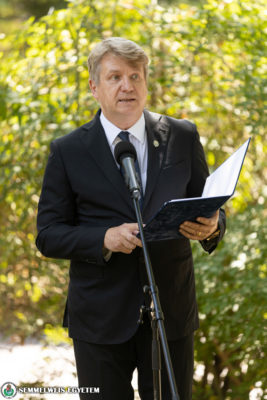 The series of events continued in the courtyard of the Inner Clinical Block, where Professor Dr. Zoltán Zsolt Nagy, Director of the Department of Ophthalmology delivered a welcome speech.
The series of events continued in the courtyard of the Inner Clinical Block, where Professor Dr. Zoltán Zsolt Nagy, Director of the Department of Ophthalmology delivered a welcome speech.
“On Hungarian Health Day, on the occasion of the 203rd anniversary of Ignác Semmelweis’ birthday, we celebrate all those who work hard in patient care every day for the recovery of patients. Furthermore, we also celebrate those, with particular reference to the events of the last year and a half, who have been involved in the fight against the COVID-19 epidemic and have been at the forefront of the rescue and care of patients with severe coronavirus infection as well as of the administration of vaccines”, the Director of the Department of Ophthalmology said.
He added that Ignác Semmelweis’s achievements are especially important in the current situation, since his results achieved in epidemiology, the mapping of the spread of the disease, his efforts to prevent it, his correct clinical and epidemiological insights, his human performance, his great personality, the timeliness of his thoughts and ideas put him back in the spotlight. In his speech, Dr. Zoltán Zsolt Nagy also talked about Dr. Emil Grósz, who used to be the director of the Department of Ophthalmology. The construction of the department building is connected to his name and he was awarded the Semmelweis goblet in 1925. Dr. Zoltán Zsolt Nagy highlighted the work, professional achievements and the memory of Ignác Semmelweis and he also emphasized the role of the university bearing his name in the fight against the coronavirus. Not only the protection of students, teachers and patients were taken care of, but in spite of the epidemiological situation, education and patient care were ongoing at the institution in the meantime. Semmelweis University was among the first institutions in administering vaccine jabs and as of now, more than 300,000 vaccine shots have been administered by its staff members. As Dr. Zoltán Zsolt Nagy pointed out, despite the vaccination, it is important to remain cautious.
Nothing is more current as the epidemiological observations of Ignác Semmelweis. One should consider his analytical works as a guideline, one may learn a great deal from these still today. If someone has knowledge, conscientiousness, perseverance and dedication, the ultimate success cannot be left behind”
– pointed out the Director.
Afterwards there was a ceremony with the placement of a time capsule, which is planned to be open on the 300th anniversary of the university. The initiative entitled ‘Letters to the Future’ was launched at the Opening Ceremony of the university held during the 250th anniversary year of Semmelweis University, in the framework of which every Semmelweis citizen had the opportunity to send a message to future students and staff members of 2069. The time capsule contained these messages, as well as a map describing the iconic buildings of the university, a textile facial mask with the university logo in commemoration of the year 2020/2021, a copy of the Figyelő magazine, some daily newspapers, a group photo taken about the members of the Senate of the University, and a university badge with the Semmelweis logo. The time capsule was placed in the courtyard of the Inner Clinical Block by Dr. Béla Merkely, Rector, Dr. Lívia Pavlik, Chancellor, and Bálint Tripolszky, President of the Semmelweis Students’ Union.
As the closing part of the ceremony, wreathes were laid by the statue of Ignác Semmelweis. On behalf of the students and staff members of Semmelweis University, Dr. Béla Merkely, Rector, Dr. Lívia Pavlik, Chancellor and Dr. Zoltán Zsolt Nagy, Director laid a wreath. On behalf of the Hungarian Chamber of Doctors, Dr. Gyula Kincses, President laid a wreath. On behalf of the Hungarian Chamber of Health Care Professionals, Dr. Zoltán Balogh, President laid a wreath. On behalf of the Semmelweis University Association of Friends, Dr. László Rosivall, President laid a wreath. On behalf of Semmelweis Students’ Union, Bálint Tripolszky, President laid a wreath. On behalf of the Instructor Self-Active Group, Krisztina Petrovay-Cselényi laid a wreath. Many university employees placed flowers by the statue of Ignác Semmelweis commemorating his birth anniversary.
Ádám Szabó
Photo: Zoltán Adrián – Photo image editing; Attila Kovács – Semmelweis University
Translation: Katalin Illés-Romhányi
